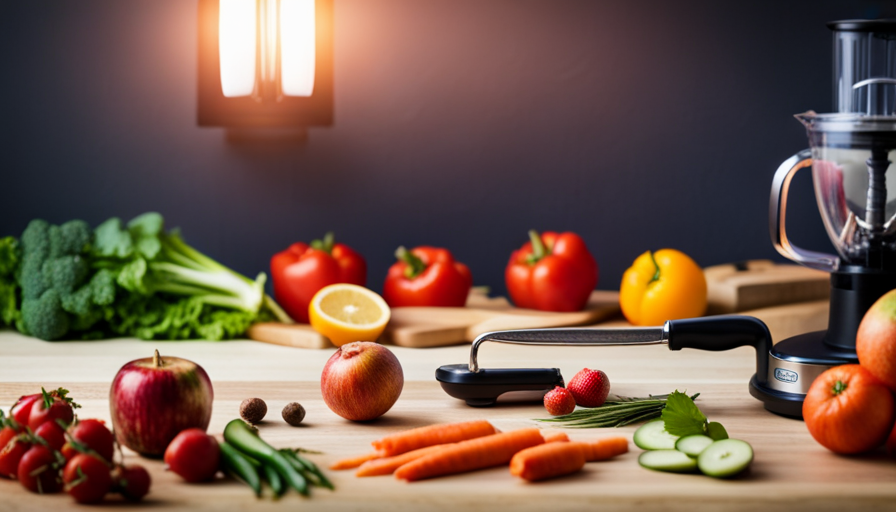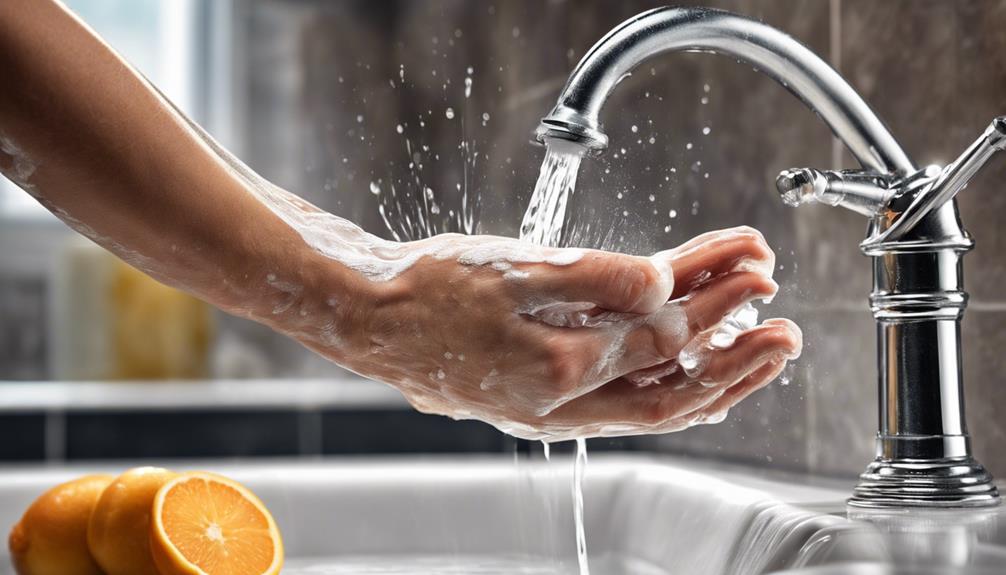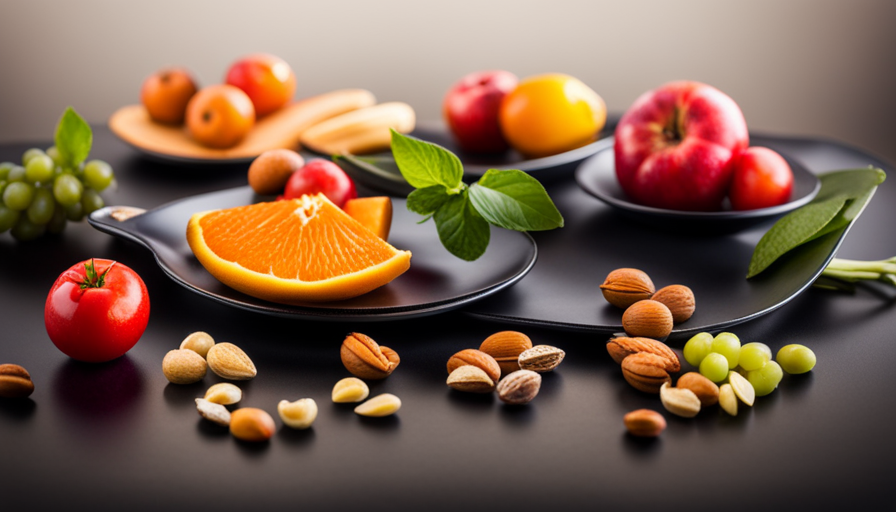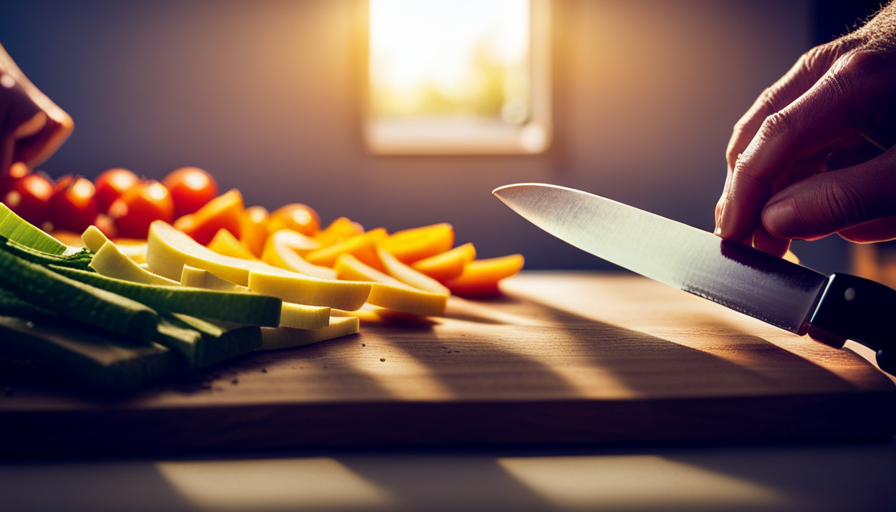Have you ever thought about what temperature is safe to cook raw chicken to make sure it is thoroughly cooked and free from harmful bacteria?
Well, today I’m going to shed some light on this important topic. Picture this: you’re hosting a dinner party and you want to impress your guests with a delicious chicken dish. But, you also want to make sure that the chicken is cooked to perfection, keeping everyone safe from foodborne illnesses.
That’s where knowing the minimum internal temperature for raw chicken comes into play. By understanding this crucial number, you can confidently cook chicken that is both tasty and safe to eat. In this article, we will explore the recommended minimum internal temperature for raw chicken, how to measure it accurately, and the potential dangers of consuming undercooked chicken.
So, let’s dive right in and discover the secrets to cooking chicken that is not only mouthwatering but also safe for consumption.
Key Takeaways
- Properly measuring the internal temperature of raw chicken is crucial for food safety.
- Visual cues like color alone are not reliable indicators of doneness.
- The recommended minimum internal temperature for raw chicken is 165°F (74°C).
- Different cooking methods and resting time can impact the internal temperature of chicken.
The Importance of Internal Temperature for Food Safety
The internal temperature of raw chicken is crucial for ensuring food safety. It’s essential to use a meat thermometer to accurately measure the internal temperature of the chicken. This is important because visual cues, such as the color of the meat, can be misleading and may not indicate the safe internal temperature.
By using a meat thermometer, you can ensure that the chicken is cooked to the recommended temperature, which kills any harmful bacteria that may be present.
Different cooking methods can have an impact on the internal temperature of the chicken. For example, grilling or frying at high temperatures can lead to uneven cooking, where the outside of the chicken may appear cooked while the inside remains undercooked. On the other hand, baking or roasting at a lower temperature allows for more even heat distribution, ensuring that the chicken reaches the desired internal temperature.
Understanding the risks of undercooked chicken is crucial for food safety. Consuming undercooked chicken can lead to foodborne illnesses such as salmonella or campylobacter. These can cause symptoms like stomach cramps, diarrhea, and vomiting. To protect yourself and others from these risks, it’s important to cook raw chicken to the minimum internal temperature recommended by food safety guidelines.
By understanding the importance of using a meat thermometer and the impact of cooking methods on internal temperature, you can ensure that your chicken is cooked thoroughly and safely. Transitioning into the subsequent section about understanding the risks of undercooked chicken, it’s vital to be aware of these risks to protect yourself and your loved ones.
Understanding the Risks of Undercooked Chicken
Cooking chicken to the proper doneness is crucial, as undercooked chicken can pose serious health risks, much like a ticking time bomb waiting to explode with harmful bacteria. It’s important for everyone to understand the risks associated with consuming undercooked chicken.
Here are five key points to consider:
-
Cross Contamination: Raw chicken can easily contaminate other surfaces and utensils in the kitchen, leading to the spread of harmful bacteria like Salmonella and Campylobacter. It’s essential to separate raw chicken from other food items to prevent cross contamination.
-
Harmful Bacteria: Undercooked chicken may harbor bacteria such as Salmonella, Campylobacter, and E. coli, which can cause food poisoning. These bacteria can lead to symptoms like diarrhea, abdominal pain, fever, and vomiting.
-
Proper Cooking Temperature: Cooking chicken to the recommended internal temperature kills harmful bacteria and ensures its safety for consumption. It’s crucial to use a food thermometer to check that the chicken reaches the proper temperature.
-
Hygiene Practices: Practicing proper hygiene, such as washing hands thoroughly with soap and water before and after handling raw chicken, can help reduce the risk of bacterial contamination.
-
Safe Storage: Storing raw chicken at the right temperature (below 40°F or 4°C) and using it within a safe timeframe can prevent bacterial growth and minimize the risk of foodborne illnesses.
Understanding these risks of cross-contamination and the importance of proper hygiene practices is essential for ensuring food safety.
Moving on to the next section, let’s delve into the recommended minimum internal temperature for raw chicken.
The Recommended Minimum Internal Temperature for Raw Chicken
To ensure your chicken is safe to eat, make sure it’s cooked until it reaches the recommended doneness. Raw chicken carries potential health risks, such as salmonella and campylobacter bacteria, which can cause food poisoning. Cooking chicken thoroughly is essential to kill these bacteria and prevent illness.
The recommended minimum internal temperature for raw chicken is 165°F (74°C). This temperature ensures that the chicken is fully cooked and safe to consume. Cooking times may vary depending on the size and type of chicken.
It’s important to note that color alone isn’t a reliable indicator of doneness. Even if the chicken appears cooked on the outside, it’s crucial to use a food thermometer to check the internal temperature. Insert the thermometer into the thickest part of the chicken, avoiding bones, and wait for a few seconds until the reading stabilizes.
Once the chicken reaches the recommended internal temperature of 165°F (74°C), it’s ready to be served. This will ensure that your chicken is cooked to perfection and minimize the risk of foodborne illnesses.
How to Measure the Internal Temperature of Chicken
Make sure you measure the temperature of your chicken using a food thermometer, so you can be confident that it’s cooked to perfection and safe for you to enjoy.
Measuring the internal temperature of chicken is crucial to ensure its safety and avoid the risks of foodborne illnesses. Using a food thermometer provides accuracy in determining the doneness of your chicken.
Insert the thermometer into the thickest part of the chicken without touching the bone, as the bone can give a false reading. The thermometer should read at least 165°F (74°C) to guarantee that harmful bacteria, such as salmonella, are killed.
It’s important to note that using alternative methods, such as checking the color of the meat or the juices, may not provide accurate results and can lead to undercooked chicken. To ensure the safety of your meal, rely on a food thermometer for accurate measurements.
With the internal temperature of your chicken measured correctly, you can now move on to understanding the dangers of consuming undercooked chicken.
The Dangers of Consuming Undercooked Chicken
Beware of the potential risks involved when you dig into a plate of undercooked chicken, as it poses serious health hazards. Consuming undercooked chicken can lead to various health consequences, including food poisoning and infections.
To understand the importance of proper cooking techniques for chicken safety, consider the following points:
-
Salmonella contamination: Undercooked chicken is a common source of salmonella, a bacterium that can cause symptoms like diarrhea, abdominal pain, and fever. In severe cases, it can even lead to hospitalization.
-
Campylobacter infection: Another common bacteria found in undercooked chicken is Campylobacter. It can cause symptoms similar to salmonella, but it can also result in Guillain-Barré syndrome, a rare neurological disorder.
-
Antibiotic resistance: Consuming undercooked chicken can contribute to the rise of antibiotic-resistant bacteria. This occurs when antibiotics are not properly used or when bacteria are exposed to low levels of antibiotics in the meat.
To ensure chicken reaches the safe internal temperature, it’s essential to follow proper cooking techniques. These techniques will be discussed in the next section, providing you with tips to guarantee your chicken is thoroughly cooked and safe to eat.
Tips for Ensuring Chicken Reaches the Safe Internal Temperature
Achieve perfectly cooked chicken every time by following these simple tips. When it comes to cooking chicken, ensuring it reaches the safe internal temperature is crucial for preventing foodborne illnesses. To help you with this, here are some tips for marinating chicken safely and using the best cooking methods for juicy chicken.
Firstly, when marinating chicken, always do it in the refrigerator. This prevents bacteria growth and keeps your chicken safe to consume. Additionally, make sure to discard any leftover marinade that has come into contact with raw chicken to avoid cross-contamination.
Next, when cooking chicken, there are a few methods that yield juicy results. One popular method is grilling, which adds a smoky flavor and crispy skin. Another option is baking, which is great for larger cuts of chicken. Lastly, you can try pan-searing or stir-frying for quick and flavorful meals.
To help you visualize these tips, take a look at the table below:
| Tips for Marinating Chicken Safely | Best Cooking Methods for Juicy Chicken |
|---|---|
| Marinate in the refrigerator | Grill for smoky flavor and crispy skin |
| Discard leftover marinade | Bake for larger cuts of chicken |
| Pan-sear or stir-fry for quick meals |
By following these tips, you can ensure that your chicken is cooked to perfection. But remember, the role of resting time in cooking chicken is also important. It allows the juices to redistribute, resulting in a more tender and flavorful meat.
The Role of Resting Time in Cooking Chicken
Resting time in cooking chicken is like a quiet interlude where the flavors harmonize and the meat becomes an exquisite symphony of tenderness. This often overlooked step in the cooking process is essential for achieving the perfect chicken dish. During the resting period, the residual heat continues to cook the chicken, allowing the juices to redistribute throughout the meat. This results in a more flavorful and moist final product.
Here are three cooking techniques that utilize resting time to enhance the flavor and texture of chicken:
-
Roasting: After removing the chicken from the oven, let it rest for 10-15 minutes before carving. This allows the juices to settle and the meat to become juicier.
-
Grilling: Once the chicken is cooked on the grill, transfer it to a plate and cover it loosely with foil. Let it rest for 5-10 minutes to allow the juices to redistribute, resulting in a more tender and juicy chicken.
-
Pan-searing: After searing the chicken on the stove, remove it from the pan and let it rest for a few minutes. This resting period allows the meat to finish cooking evenly and retain its juiciness.
Incorporating a resting period into these cooking techniques ensures that the chicken is cooked to perfection. It’s important to note that skipping this step can result in a dry and tough chicken. Therefore, it’s a crucial step to achieve the best results when cooking chicken.
Moving on to common mistakes to avoid when cooking chicken…
Common Mistakes to Avoid When Cooking Chicken
One common mistake many people make when cooking chicken is rushing the cooking process, resulting in a dry and flavorless dish. Taking the time to properly season the chicken is crucial in order to enhance its taste. One mistake is relying solely on salt and pepper for seasoning, when there are many other flavorful options available such as garlic powder, paprika, or herbs like rosemary and thyme.
Another mistake is not marinating the chicken before cooking, which can help to tenderize the meat and add extra flavor.
In addition to seasoning, the cooking method used can greatly affect the juiciness of the chicken. One mistake is overcooking the chicken, which can lead to dryness. It’s important to cook the chicken until it reaches the appropriate internal temperature, which is 165°F (74°C) for chicken. Using a meat thermometer can help ensure that the chicken is cooked to perfection.
Another mistake is using high heat throughout the entire cooking process, which can result in the outside of the chicken becoming dry while the inside remains undercooked. Starting with high heat to sear the chicken and then lowering the heat can help to maintain juiciness.
Properly handling and storing raw chicken is essential to prevent foodborne illnesses. [Transition to the subsequent section: When handling raw chicken, it’s important to follow proper safety precautions to ensure food safety.]
How to Properly Handle and Store Raw Chicken
When handling and storing raw chicken, it’s crucial to follow proper safety precautions to ensure that harmful bacteria are prevented from spreading, as the CDC estimates that approximately 1 in 6 Americans suffer from a foodborne illness each year.
To maintain proper hygiene, always wash your hands thoroughly with soap and water before and after handling raw chicken. Additionally, it’s important to keep raw chicken separate from other foods to avoid cross-contamination. This means using separate cutting boards, utensils, and containers for raw chicken and other ingredients.
When storing raw chicken, it should be kept in the refrigerator at a temperature below 40°F (4°C) to slow down bacterial growth. It’s best to store raw chicken on a lower shelf to prevent any juices from dripping onto other foods. If you’re not planning to use the chicken within a couple of days, it can be safely stored in the freezer. Make sure to package it in airtight containers or freezer bags to prevent freezer burn.
Properly handling and storing raw chicken is just one aspect of ensuring food safety. Other factors to consider include cooking chicken to the minimum internal temperature of 165°F (74°C), avoiding cross-contamination during preparation, and refrigerating leftovers promptly.
Other Factors to Consider for Food Safety with Chicken
Now that we know how to properly handle and store raw chicken, let’s discuss other important factors to consider for food safety.
When it comes to cooking chicken, it’s crucial to ensure that it reaches the minimum internal temperature to kill any harmful bacteria present. The minimum internal temperature for chicken is 165°F (74°C). This temperature should be measured using a food thermometer inserted into the thickest part of the chicken.
To ensure that chicken is cooked thoroughly and safely, it’s essential to use proper cooking methods. Some popular cooking methods for chicken include baking, grilling, frying, and boiling. Each method requires different cooking times and temperatures, so it’s important to follow specific guidelines for each method to ensure that the chicken is cooked to the correct internal temperature.
In addition to cooking methods, preventing cross contamination is also vital for food safety. Cross contamination occurs when bacteria from raw chicken come into contact with other foods, utensils, or surfaces. To prevent cross contamination, it’s crucial to keep raw chicken separate from other foods, use separate cutting boards and utensils for raw chicken, and properly clean and sanitize any surfaces that come into contact with raw chicken.
By following proper cooking methods and preventing cross contamination, you can ensure that your chicken is cooked safely and prevent the risk of foodborne illnesses.
Frequently Asked Questions
Can the minimum internal temperature for raw chicken vary depending on the cooking method?
Yes, the minimum internal temperature for raw chicken can vary depending on the cooking method. Different cooking techniques require different recommended temperatures to ensure that the chicken is cooked thoroughly and safe to eat.
For example, grilling or broiling chicken requires a higher temperature of around 165°F (74°C), while baking or roasting chicken requires a lower temperature of around 350°F (177°C).
It’s important to follow recommended temperature guidelines to prevent foodborne illnesses and ensure the chicken is cooked properly.
Is it safe to consume chicken if it has reached the minimum internal temperature but is still slightly pink?
Yes, it’s safe to consume chicken if it’s reached the minimum internal temperature but is still slightly pink. Cooking techniques like grilling, baking, or broiling can help achieve a juicy, well-cooked chicken. Common misconceptions about the appearance of cooked chicken can lead to overcooking, resulting in dry meat.
As long as the internal temperature reaches the recommended minimum, which is 165°F (74°C), the chicken is safe to eat, even if it has a slight pink color.
What are the potential health risks associated with consuming undercooked chicken?
When it comes to undercooked chicken, potential health risks cannot be taken lightly. Consuming undercooked chicken can lead to foodborne illnesses caused by bacteria like Salmonella and Campylobacter. These pathogens can cause symptoms such as diarrhea, abdominal pain, vomiting, and fever. In severe cases, they can even lead to hospitalization or, in rare instances, death. It’s crucial to ensure that chicken is cooked thoroughly to eliminate any potential health risks associated with undercooked poultry.
How long does it typically take for chicken to reach the minimum internal temperature during cooking?
Cooking time for chicken can vary depending on several factors. The size and thickness of the chicken pieces, the cooking method used, and the temperature of the cooking equipment all affect how long it takes to reach the minimum internal temperature.
For example, baking or grilling may take longer than frying. It’s important to ensure that chicken reaches the minimum internal temperature to avoid potential health risks associated with undercooked chicken.
Are there any specific guidelines for cooking chicken in a microwave or slow cooker to ensure it reaches the safe internal temperature?
When cooking chicken in a microwave or slow cooker, it’s important to ensure it reaches a safe internal temperature. Some may argue that these methods don’t cook chicken thoroughly. However, by following specific guidelines, you can safely cook chicken in both the microwave and slow cooker.
For microwave chicken cooking, use a microwave-safe dish and rotate the chicken for even cooking.
In a slow cooker, cook on high for at least 4 hours or on low for 8 hours to ensure the chicken reaches a safe internal temperature.
Is Eating Raw Cold Food a Cause of Food Poisoning from Raw Chicken?
Eating raw cold food, especially raw chicken, can lead to the symptoms of raw cold food such as food poisoning. Consuming undercooked chicken can result in vomiting, diarrhea, and abdominal pain. It is essential to properly cook chicken to prevent the risk of foodborne illnesses.
Conclusion
In conclusion, it’s crucial to ensure that raw chicken is cooked to the recommended minimum internal temperature for food safety. As I learned, the Centers for Disease Control and Prevention (CDC) states that chicken should be cooked to an internal temperature of at least 165°F (74°C) to kill harmful bacteria.
This statistic is alarming considering that a study found that 48 million cases of foodborne illnesses occur each year in the United States, with chicken being one of the leading causes. Therefore, it’s imperative to always use a food thermometer to accurately measure the internal temperature of chicken and prevent the risks associated with consuming undercooked poultry.










